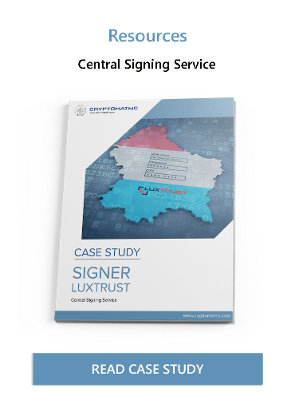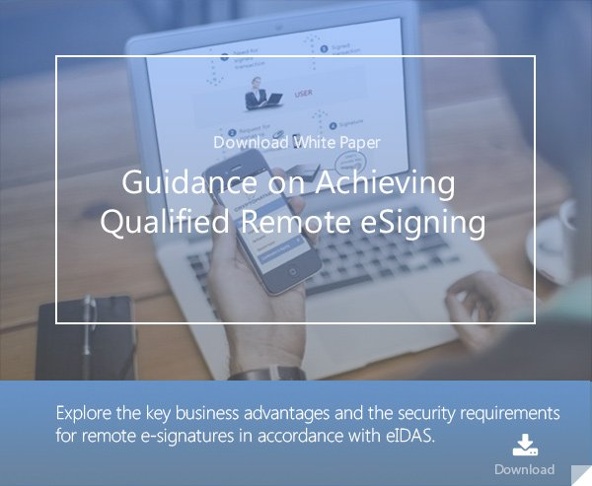
With each passing year, the volume of international trade in goods and services keeps rising. With all of this trade, however, comes an associated cost. This not only involves some unavoidable components like shipping but also costs incurred due to inefficiency in other systems, like customs clearances and trust between the trading parties.
Each year, billions of dollars are paid as fees to banks for facilitating international trade deals via products like Letters of Credit or other structured solutions. Delays in custom clearances can cause a significant loss in the form of demurrages, missed deadlines, production delays, and more.
The scope of the Uniform User Management and Digital Signatures Project (UUM&DS) is to provide Identity and Access management services that traders can use for customs. It is a trans-European system which allows traders and Economic Operators (EOs) to access the unified European Information System for customs. The system would enable a single and simplified user interface and allow EOs to seamlessly access the customs portal.
Why Do We Need a UUM&DS System?
 Each Member State of the European Union has a complex and varied customs system in place. This makes it difficult for businesses within and outside the EU to access the European markets easily.
Each Member State of the European Union has a complex and varied customs system in place. This makes it difficult for businesses within and outside the EU to access the European markets easily.
For the digital Single Market to become a reality, the need for such a harmonizing customs system was felt. UMM&DS has therefore been one of the longer-running projects in the eID domain under the Connecting Europe Facility.
The real challenge to implement a unified system stems from the fact that each Member State has different requirements to enable a successful customs transaction. UMM&DS must take all of these into consideration and provide a solution that would be acceptable to all Member States and comply with all the legal requirements.
Additionally, it should be user-friendly, secure, and provide the necessary functionality that users demand.
Where does eIDAS come in?
The tools provided by eIDAS are fundamental to making the UUM&DS possible.
UMM&DS predates eIDAS, but with the adoption of the eIDAS regulation, it has evolved to make full use of the new possibilities. eIDAS provides:
- Secure and authorized access
- Access for delegated users
- Established trust schemes
- A secure way to exchange identity information.
All these features are necessary to ensure that businesses can confidently use the UMM&DS interface for their customs interactions.
Conclusion
A single market cannot exist efficiently without a single customs interface. Many European Countries have complex customs systems which complicate matters and create artificial barriers for businesses.
UMM&DS goes a long way in alleviating some of these problems and provides a unified interface for businesses. eIDAS is an integral part of this solution as it provides the basic identification, authentication, access management, and trust services to businesses accessing the customs interface.
References and Further Reading
- REGULATION (EU) No 1316/2013 establishing the Connecting Europe Facility, amending Regulation (EU) No 913/2010 and repealing Regulations (EC) No 680/2007 and (EC) No 67/2010(12/2013), by the European Parliament and the European Council
- Selected articles on Authentication (2014-today), by Heather Walker, Luis Balbas, Guillaume Forget, Jan Kjaersgaard, Dawn M. Turner and more
- Selected articles on Electronic Signing and Digital Signatures (2014-today), by Ashiq JA, Gaurav Sharma, Guillaume Forget, Jan Kjaersgaard , Peter Landrock, Torben Pedersen, Dawn M. Turner, and more
- The European Interoperability Framework - Implementation Strategy (2017), by the European Commission
- Proposal for a DIRECTIVE OF THE EUROPEAN PARLIAMENT AND OF THE COUNCIL amending Directive (EU) 2015/849 on the prevention of the use of the financial system for the purposes of money laundering or terrorist financing (2016), by the European Commission
- REGULATION (EU) 2016/679 on the protection of natural persons with regard to the processing of personal data and on the free movement of such data, and repealing Directive 95/46/EC (General Data Protection Regulation) (2016), by the European Parliament and the European Council
-
Proposal for a REGULATION concerning the respect for private life and the protection of personal data in electronic communications and repealing Directive 2002/58/EC (Regulation on Privacy and Electronic Communications), (2017), by the European Parliament and the European Council
- Revised Directive 2015/2366 on Payment Services (commonly known as PSD2) (2015), by the European Parliament and the Council of the European Union
- REGULATION (EU) No 910/2014 on electronic identification and trust services for electronic transactions in the internal market and repealing Directive 1999/93/EC (2014) by the European Parliament and the European Commission
-
DIRECTIVE 2013/37/EU amending Directive 2003/98/EC on the re-use of public sector information (2013) by the European Parliament and the Council
Image: Pulse of Europe, courtesy of Jon Worth, Flickr (CC BY 2.0)
